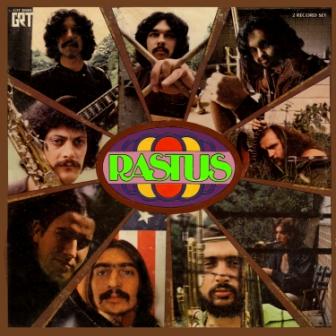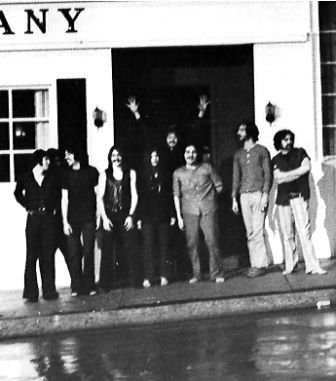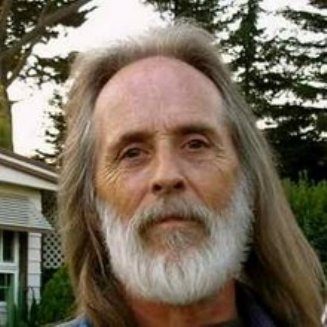Rastus....The First LP!

The First Rastus LP!
Fall of 1969
Rastus had been playing The Scene in
Benedetta Balistrieri ran The Scene with an iron hand but she was very gracious to us and helped the band a great deal, always seeming to find a few dates when the band was hurting for work.
When it was decided we would record Rastus’ first record at a small R&D studio in
 From left to right: Mugsy, Smokey, Vic, Barbara Vettle, Rhys, Cantale, unknown, Taylor
From left to right: Mugsy, Smokey, Vic, Barbara Vettle, Rhys, Cantale, unknown, Taylor
Photo by Michael Schneidler
Sonad Studios was housed in the basement of a small, L shaped mini-mall located directly in the center of
The mall itself consisted of a Baskin-Robbins ice cream shop at the end closest to the fountain. Then there was an electrical repair shop adjoined by an empty Household Finance slot. On the corner of the mall was a Chinese restaurant where we all would eat breakfast when we could afford it. There was a small dress shop which was dying and on the end, another vacant slot. All in all, it seemed as if the mall was in it’s death throes.
Sonad Studios was designed by an old man named Curt Knoppel. Knoppel had hooked up with a great man named Bernard Barker who had developed an electrical circuit he called Sonad. Mr. Barker had, at one time, been a radar operator on a bomber during World War Two. He culled the ideas for the Sonad circuit from his knowledge of radar. Later we would find Knoppel to be a complete criminal. Nothing he had told us was the truth and all those lies would come back to seriously hurt us in the end.
Here’s how Sonad worked in a nutshell….One would take an audio signal (mono at that time) and enter it into the Sonad circuit. The Sonad circuit then split the signal into two equal parts (a piggyback). While one audio signal remained clean, the other could be manipulated in real time. One could adjust the Sonad signal in an infinite variety of ways. At the end of the process, you mixed the clean signal with the Sonadized signal. The end result was amazing! The sounds seemed to jump out at you through the speakers. As an engineer, I could see the true worth of the product and I got on board myself to help raise the money for Research and Development.
Our investors were local corporate men and women as well as elderly folks looking for a good investment. The money came in and the studio was completed and ready to make records. We nearly made it.
The studio consisted of four small rooms and a large control room. The control room was designed like a living room with several lounge chairs and a couch against the wall. The studio rooms themselves were small and compact. There was a guitar room which was about 8X10 feet; a piano room with an old upright grand, which was about 6X8; a horn room which also doubled as a vocal room (10X12) and a bass room (6X8) so we could all stay out of Don Nagy’s way.
We started by recording the band tracks for the individual songs. We used an 8 Track, 3M machine. That recorder was state-of-the-art at the time and I considered myself lucky to have it. The band tracks took about a week to record and the following week I had in mind overdubbing vocals, horn solos and other miscellaneous sounds. However, something was wrong. I couldn’t get the machine to sync correctly with the Fairchild console we were using. Then we found that the guy who wired the Fairchild board had done the job incorrectly and the board had to be re-wired which took almost a week. That meant the band had little to do during that time. Rastus and boredom were not a great combination to say the least.
One night about 3 in the morning we were hanging out in the control room when someone yelled down the stair well, “Check out the fountain in front! It’s foaming at the mouth!” We all ran upstairs with John Taylor conspicuously missing. To my horror, I saw the fountain gurgling up bubbles as fast as it spit water. The soap was already down to the intersection and had caused several late-night drivers to slide through the stop signs and into each other. There was one car lying on it’s side next to a pancake restaurant. This, of course, brought the police. All six of them.
The cops were already aware there were a group of hippies holed up in the strip mall and several nights after the fountain debacle, walked in through the back door of the studio. No one noticed them as we were in the middle of Mike Geraci’s horn solo intro for “I-75 Riff”. When Mike had finished we were all very excited as Mike had blown the perfect intro. I stopped the machine, turned around and then saw the police standing in the back of the darkened control room. The control room reeked of pot and everyone froze for a minute or so. Then, there was more tap-dancing than you would have seen in a Fred Astaire movie. I finally turned on the lights and welcomed the police to Sonad Studios. They asked what we were recording and I played them the rough version of “I-75 Riff” sans the vocals. They loved it! After that evening, the police laid off us a bit and never came in again….thank God.
It took us a total of one month to record the studio sides of the first Rastus LP and they are listed on the sales page in the order they appeared on the record.
Just to let you know….none of us have ever received as much as a statement from GRT Records, much less a check for royalties after the initial payment was made to the band to lease the master. There are publishers to which I have written who say they hold the copyrights to the original songs (many of which are mine) that have never returned to me in any respect. We will keep trying. It would be nice to get this all sorted out.
Within the next couple of weeks, I’ll put up the next part….The First Rastus LP….The Live Side!, with all the respective songs in order of appearance. Also, I will tell you the horror story that happened with the Sonad patent and the Sonad Studio….and me.
Rock On!
John Rhys
Click here to go to Rastus download page!






